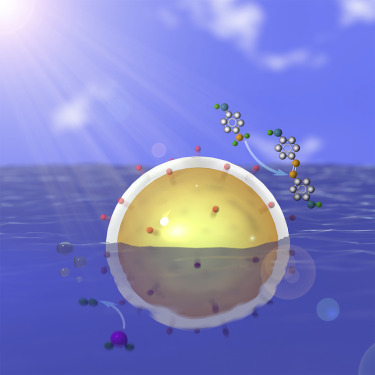Chem ( IF 19.1 ) Pub Date : 2020-01-09 , DOI: 10.1016/j.chempr.2019.12.015 Hua Zhang , Jie Wei , Xia-Guang Zhang , Yue-Jiao Zhang , Petar M. Radjenovica , De-Yin Wu , Feng Pan , Zhong-Qun Tian , Jian-Feng Li

|
Plasmon-mediated photocatalysis via hot-electron transfer attracts increasing interest due to its capability to improve energy utilization efficiency. However, more insightful information is still needed to reveal the mechanism of interfacial hot-electron transfer. Herein, the plasmon-induced hot-electron transfer at different plasmonic interfaces, including Au-insulator (SiO2), Au-semiconductor (TiO2 and Cu2O), and Au-metal (Pd and Pt), is directly investigated using surface-enhanced Raman spectroscopy (SERS) and density functional theory calculation with a (sub)nanometer spatial resolution, through the fabrication of well-defined plasmonic nanostructures. (Sub)nanometer-distance dependence of interfacial hot-electron transfer has been identified for the first time. Hot electrons can migrate across the Au-semiconductor or Au-metal interfaces and transfer more than 10 nm in semiconductors but decay to thermally equilibrated states rapidly in metals in less than 1 nm. Such a transfer process is blocked at the Au-insulator interface. This work promotes the fundamental understanding of plasmon-induced hot-electron transmission and photocatalysis at plasmonic interfaces.
中文翻译:

拉曼光谱法直接探测等离子体诱导的界面热电子转移
通过热电子转移的等离子介导的光催化由于其提高能量利用效率的能力而引起了越来越多的关注。但是,仍然需要更多有见地的信息来揭示界面热电子转移的机理。在此,等离子激元在包括Au-绝缘体(SiO 2),Au-半导体(TiO 2和Cu 2O)和Au-金属(Pd和Pt)是通过表面增强拉曼光谱(SERS)和密度泛函理论计算并通过(亚)纳米空间分辨率通过确定的等离激元纳米结构的制造而直接研究的。首次确定了界面热电子转移的(亚)纳米距离依赖性。热电子可以迁移到Au半导体或Au-金属界面上,并在半导体中转移超过10 nm,但在不到1 nm的金属中迅速衰减到热平衡态。这种传输过程在Au绝缘子接口处被阻止。这项工作促进了对等离激元界面上的等离激元诱导的热电子传输和光催化的基本理解。















































 京公网安备 11010802027423号
京公网安备 11010802027423号